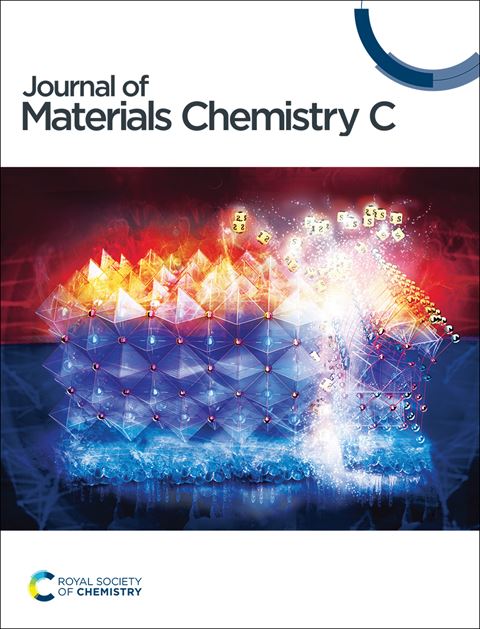刺激反应性普鲁士蓝类似物。
IF 5.1
2区 材料科学
Q2 MATERIALS SCIENCE, MULTIDISCIPLINARY
引用次数: 0
摘要
被称为普鲁士蓝类似物的金属氰化物框架显示出一系列多样化和可调的性质。特别是,它们通常极易受到外部刺激的影响,如温度、压力、辐射、吸附的客体或电场/磁场。这可能会导致罕见而有趣的现象,包括湿致磁性、电致变色或光开关电子双稳性,从而实现广泛的潜在应用。本文简要介绍了普鲁士蓝类似物的刺激响应行为,包括自旋交叉、电荷转移、色差、电导率、磁性和应变。在整个过程中,强调了具有未来发展潜力的领域。本文章由计算机程序翻译,如有差异,请以英文原文为准。
Stimuli-responsive Prussian blue analogues†
The metal–cyanide frameworks known as Prussian blue analogues display a suite of diverse and tuneable properties. In particular, they are often highly susceptible to modification by external stimuli, such as temperature, pressure, radiation, adsorbed guests, or electric/magnetic fields. This can lead to rare and intriguing phenomena—including humidity-induced magnetism, electrochromism, or light-switchable electronic bistability—which enable a wide range of potential applications. The present article briefly surveys the stimuli-responsive behaviour of Prussian blue analogues, including spin crossover, charge transfer, chromism, conductivity, magnetism, and strain. Throughout, areas with potential for future developments are highlighted.
求助全文
通过发布文献求助,成功后即可免费获取论文全文。
去求助
来源期刊

Journal of Materials Chemistry C
MATERIALS SCIENCE, MULTIDISCIPLINARY-PHYSICS, APPLIED
CiteScore
10.80
自引率
6.20%
发文量
1468
期刊介绍:
The Journal of Materials Chemistry is divided into three distinct sections, A, B, and C, each catering to specific applications of the materials under study:
Journal of Materials Chemistry A focuses primarily on materials intended for applications in energy and sustainability.
Journal of Materials Chemistry B specializes in materials designed for applications in biology and medicine.
Journal of Materials Chemistry C is dedicated to materials suitable for applications in optical, magnetic, and electronic devices.
Example topic areas within the scope of Journal of Materials Chemistry C are listed below. This list is neither exhaustive nor exclusive.
Bioelectronics
Conductors
Detectors
Dielectrics
Displays
Ferroelectrics
Lasers
LEDs
Lighting
Liquid crystals
Memory
Metamaterials
Multiferroics
Photonics
Photovoltaics
Semiconductors
Sensors
Single molecule conductors
Spintronics
Superconductors
Thermoelectrics
Topological insulators
Transistors
 求助内容:
求助内容: 应助结果提醒方式:
应助结果提醒方式:


